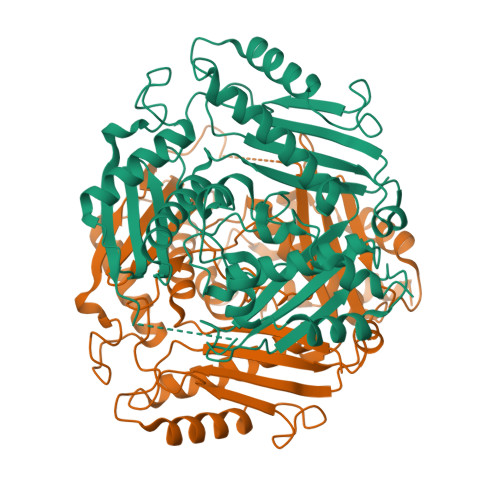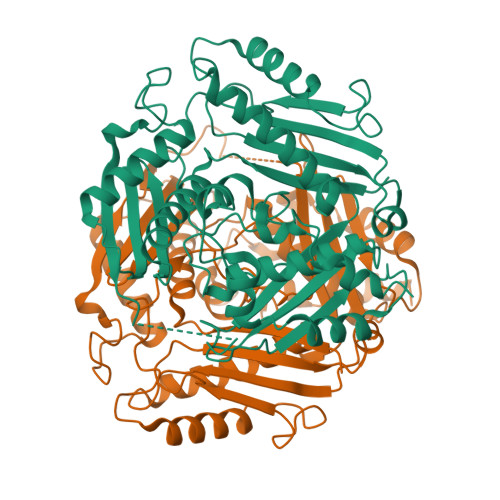Structure of an unusual S-adenosylmethionine synthetase from Campylobacter jejuni.
Zano, S.P., Pavlovsky, A.G., Viola, R.E.(2014) Acta Crystallogr D Biol Crystallogr 70: 442-450
- PubMed: 24531478
- DOI: https://doi.org/10.1107/S139900471303023X
- Primary Citation of Related Structures:
4LE5 - PubMed Abstract:
S-Adenosylmethionine (AdoMet) participates in a wide range of methylation and other group-transfer reactions and also serves as the precursor for two groups of quorum-sensing molecules that function as regulators of the production of virulence factors in Gram-negative bacteria. The synthesis of AdoMet is catalyzed by AdoMet synthetases (MATs), a ubiquitous family of enzymes found in species ranging from microorganisms to mammals. The AdoMet synthetase from the bacterium Campylobacter jejuni (cjMAT) is an outlier among this homologous enzyme family, with lower sequence identity, numerous insertions and substitutions, and higher catalytic activity compared with other bacterial MATs. Alterations in the structure of this enzyme provide an explanation for its unusual dimeric quaternary structure relative to the other MATs. Taken together with several active-site substitutions, this new structure provides insights into its improved kinetic properties with alternative substrates.
Organizational Affiliation:
Department of Chemistry, The University of Toledo, Toledo, OH 43606, USA.
















